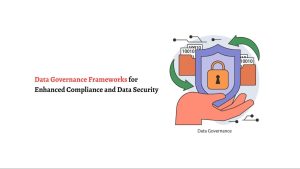7 Ways to Reinforce Your E-Commerce Site’s Cybersecurity

Technology has been credited to have provided ease for practically doing anything. At the click of a button you can connect with a friend thousands of miles away, book a flight, buy your groceries, or indulge in the latest fashion trend. Thanks to e-commerce platforms, activities you once have had to leave the comforts of your home for can now be accomplished at a tap of finger. Launching your own business in cyberspace has never been easier as you are almost guaranteed a market—by 2021, it is expected that over 2.14 billion people worldwide will be buying goods and services online. So you set-up your website.
But here’s a sobering thought: 29% of your website traffic is there to attack you. Whether you’re an established e-commerce platform, a burgeoning small business, or somewhere in between, hackers (and bots—most breaches aren’t even manually performed by humans) do not discriminate. In fact, small businesses stand to be most vulnerable as hackers know they invest less in cybersecurity measures and yet store sensitive customer data.
With almost one out of three online retailers reporting significant loss because of a cyberattack, it’s about time e-commerce businesses put cybersecurity at the forefront of their operations. Below is a lowdown of what you need to know and what you can do to make your platform cyber-secure.
What is Cyber Security?
Cybersecurity is the act of “protecting systems, networks, programs and devices from digital attacks.” Simply put, a cyber-secure platform prevents malicious access to sensitive data or information that can compromise its users and/or the business’ operations as a whole.
What are Cyber Attacks?
A cyberattack is pretty much any threat launched against any internet-enabled platform or device that can cause a myriad of repercussions ranging from website defacement, and system infiltration, to identity theft, and or extortion. These attacks can come in various forms or as a combination, depending on the threat’s level of sophistication. Below are the five most common types of cyberattacks:
1)Malware:
Short for “malicious software”, malware is the blanket term for viruses, worms, Trojan horses, spyware, adware and ransomware whose main objective is to virtually trespass into a computer and steal or damage data. Below is an example of a typical Trojan horse, camouflaged as a ‘system warning’ or helpful software that an unassuming user can download and infect their computer with.
2) Phishing:
Most, if not all of us have received that dubious email telling us we won the lottery or that a contact is in dire need of financial assistance after being stuck in some country whilst traveling. These cyberattacks are called phishing—using electronic mail to “fish” or attract a victim. A more devious tactic of this ploy is when hackers go the extra -mile to recreate official correspondence like the one supposedly from Amazon below:
3) Distributed Denial of Service (DDoS):
DDoS attacks are a concerted effort from various sources, usually through botnets—a group of remote-controlled computers or “bots” that are able to execute multiple tasks automatically. As the name implies, the aim is to overwhelm a system or a website, and inevitably cause it to “crash” thereby impeding its ability to provide the service it offers.
4) Ransomware:
One of the most sinister cyberattacks is this form of malware that holds data or information “hostage” by blocking access through a lockdown. A ransom, usually in the form of a cryptocurrency payment, is then demanded by the attacker. Only after it is paid will the attacker unlock the device or provide a decryption key.
5) Social media threats:
Social media platforms have not been spared and it only takes one single friend spreading a chain letter with a hidden link to infect your device. What could be worse however is if your business’ social media account has been breached and is sharing shady links as with what happened to HBO’s Game of Thrones Facebook page. Not only were their social media pages compromised but the hacker was also able to penetrate the company’s network—accessing proprietary data, leaking TV show scripts and demanding a $6M ransom for the data stolen.
The Importance of a Cybersecurity in E-Commerce and What You Can Do To Reinforce Your E-Commerce Site
As more and more transactions are conducted online brought about by the exponential increase of the digital populace, hackers are becoming more creative in their attempts to access the massive amount of personal data available. Cybersecurity threats are now more potent and frequent than ever due to multiple device usage by users.
Small businesses have not been spared. As a matter of fact, they have become target of at least 90% of cyberattacks, 45% of which falls under the retail industry. This is largely due to gaps in cybersecurity measures, and the type of data retailers possess such as customer information and payment details.
Businesses incur both direct and indirect financial damages when they suffer a cyberattack. One of the major expenses is a mandatory forensic examination as required by the Payment Card Industry Security Standards Council (PCI SSC), an entity founded by major credit card brands American Express, Discover, JCB International, MasterCard and Visa to safeguard its users. The investigation fetches between $20,000 to $50,000 on top of the compliance violation fines. One way to prevent cyberattacks is by training your in-house IT properly and making sure PCI developer training is received by every member on the team.
Indirect costs on the other hand involve losing online credit card payment options, negative press, and a loss of confidence from your users—which a study found to have caused up to 31% of consumers cutting ties with a brand after a data breach
British company TalkTalk suffered a devastating loss after a cyberattack that resulted into a leak of their customer’s personal information (emails, passwords, bank details, you name it!). The breach reportedly cost the telecommunications corporation £77 million, caused 100,000 customers to jump ship and lowered their share value by 20%. On top of this, they made headlines for the £400,000 record-high penalty issued by the UK government.
Related : 15 Online Free Tools to Scan Website Security Vulnerabilities & Malware
So what can you do to guard your online business from these cyberattacks?
We’ve listed seven tips you can immediately carry out.
- Adhere to PCI Security Standards. Having an online credit card payment gateway allows you to provide your consumers with ease of doing business. Losing this privilege will be a big blow to your company so make sure you follow their requirements, some of which are outlined below:
- Demand strong passwords. While initial account sign-ups may cause a bit of a hassle for your customers, remind them that this is for their own data security. Require a combination of alpha-numeric passwords that is at least 12 characters to deter hacker-developed algorithms that crack passwords.
- Require Card Verification Value (CVV) numbers. As an additional security measure, don’t just take the saved basic card details as sufficient payment information. In the event that hackers get hold of a customer’s name and credit card number, the additional CVV provides an extra layer of protection.
- Implement supplemental precautionary measures. Something as simple as limiting the number of wrong login attempts, number of transactions, offering two-factor authentication, asking for a security question, or adding a captcha test can protect your customers and deter hackers.
- Use security seals. While displaying trust badges provided by your software security provider is good practice, sharp-witted customers also know that these can easily be copy-pasted. Installing an Extended Validation Secure-Socket Layer (EV SSL) certificate for your website’s data encryption on the other hand is hard to forge. Having that padlock icon and an ‘https://’ address (the ‘s’ stands for secure) will put your users more at ease when they input personal data.
- Update your site and conduct periodic checks. Whichever platform your e-commerce website is on, make sure you install timely system updates and run regular checks for possible bugs and other potential sources of vulnerabilities.
- Educate yourself and your team. You are only as good as what you know. Keep yourself up to speed with current cybersecurity trends. Enforce security policies involving data sharing, network access, emailing, and use of social media. Train your team to have strong password practices and equip them to be able to recognize irregular transactions or suspicious emails. After all, knowledge is power.
Conclusion :
A properly protected website isn’t just about making sure your business won’t get looted. Putting a premium on cyber security also protects your brand, and ultimately forges trust between you and your customers
You don’t need to be a computer whiz to take the above-mentioned steps to make your website cyber-secure. Don’t be an easy target for hackers, start protecting your e-commerce platform pronto!






